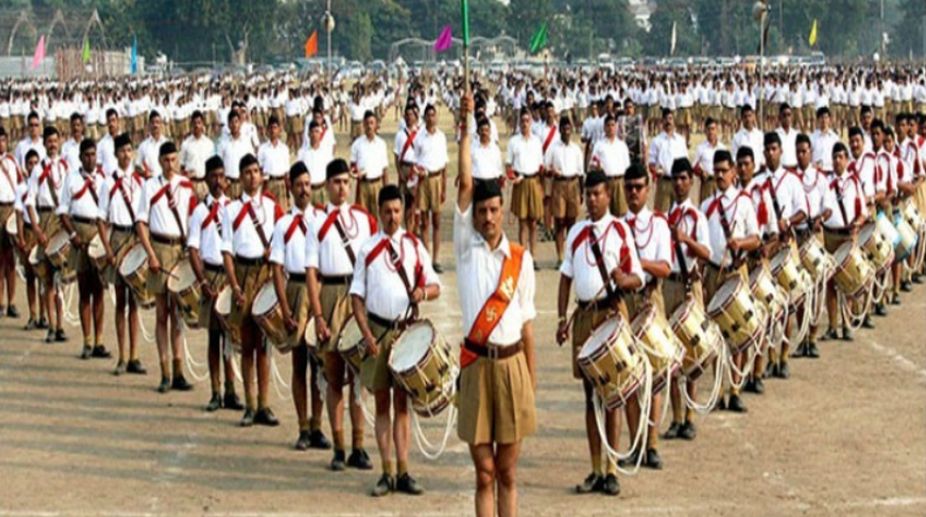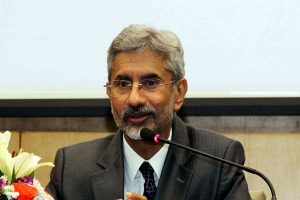The other movement was for the unadulterated Hindu Rashtra. It was the fusion of the erstwhile Hindu Mahasabha, the RSS and the ideas of Vinayak Savarkar. But Mahatma Gandhi made them ineffective with his own lifestyle and political leadership. After Independence, Jawaharlal Nehru tried to modernise India on the western model of enlightenment. Our Constitution mandated adult franchise, including women, despite abysmal level of literacy. The Hindu Code Bill gave property rights to women, rights of divorce and alimony for the female partners. Freedom of speech, press freedom, rights of individuals, affirmative actions for the Scheduled Castes and Tribes and many other liberal ideas are enshrined in our Constitution. The only problem was that the West gave a damn about their values being introduced in a newly independent nation with one-sixth of the world’s population. Outside their own borders, they do not care about those values. It is all about economic benefits and military influence that matters to them. On both scores, India offered them nothing at that point and we were marginalised in international affairs.
The Islamic revolution in Iran gave Hindus in India a new sense of identity. Kapil Dev leading India to victory in the World Cup Cricket gave us a new form of self-confidence. Our success in the IT and BPO sectors drew international attention and respect. Finally, our economic growth starting in the 1990s based on consumption led to huge import of foreign goods, paid for by remittances of Indian diaspora in the Middle East and elsewhere.
Advertisement
This gave us some clout in international affairs. All these gave the better-off Indians a new sense of pride, almost a false sense of vanity, and the feeling of our unique Hindu heritage as the propellant for future development. In the eyes of many in the resurgent India, Nehru’s liberal ideals had no link to our traditions and no economic benefit either. The West would rather trade with the totalitarian Communist regime in China that exploits mercilessly the labour force there, than with India with strong labour laws borrowed from the West.
The most controversial issue was secularism. For us it meant equal treatment to all religions, and not the separation of the Church and the State as is understood by secularism in the West. I do not even know the Bengali term for secularism. It was kept deliberately vague for us. This caused huge controversy and vote-bank politics that alienated most Hindus.
All these frustrations, international developments with resurgent Islam and China, and our pride in some of our economic achievements revived the sense of Hindu identity that has now taken its hold On our nation.
Both Mahatma Gandhi and the Hindu Mahasabha/RSS combine used our Hindu symbols to mobilise the nation. They created the only two Pan-India political parties in India. All efforts to create other Pan-India parties after Independence led to nowhere. The liberal experiment was just a blip in our history. The discussion of our post Independence politics by our political analysts to predict our future may, therefore, be useless. It is true that Hindus are divided along caste lines and regional feelings.
But neither any caste, including the Dalits, nor inhabitants of any region in the heartland want to leave the Hindu fold. All Hindus, the vast majority of people in India, have the same devout feelings about temples and religious festivals of all parts of India. This religious fervour seems to be increasing by the day, as I noticed to my surprise during the current stay in India. The BJP/RSS combine can cleverly play on this religious sentiment by implementing some social and economic measures to reduce the friction among various castes in India. This is the task Narendra Modi is performing splendidly. His calls to motivate the nation to attain new heights appeal to all Hindus and some non-sectarian Muslims. This is the modern version of Hindu Rashtra of pre-historic days in the minds of most of our countrymen.
Although deeply disturbing, it is my opinion that this new found identity through the sense of being a Hindu is here to stay. Our pre-independence politics of mass arousal through Hindu symbols, both by the Congress and Hindu Mahasabha, clearly indicated the trend as started by Bankimchandra. It is no wonder that Bande Mataram was the rallying cry of the Congress during our struggle for Independence and is also considered to be our true National Anthem by the current rulers in India.
Are we reaching the “end of history” in India? To mimic the Marxist analogy, our history went through the “unorganised” form of Hindutva at the dawn of history, followed by invaders from the North who settled in India, thereby leading to a cultural fusion and expansion of commerce. The next stage was the imperialistic rule by the “enlightened” Europeans. The final phase, after a chaotic period, started taking shape with the BJP winning absolute majority in Parliament in 2014. Hegelian ideas of linear progress until the “end of history” is, however, not in our philosophical tradition. We believe in historical cycles. Many Hindus are hoping that 2014 signifies the beginning of the cycle from Kalyug to Ram Rajya. How we can bypass the Satya Jug remains a mystery.
The writer is former Dean and Emeritus Professor of Applied Mathematics, University of Twente, The Netherlands.
(Concluded)











